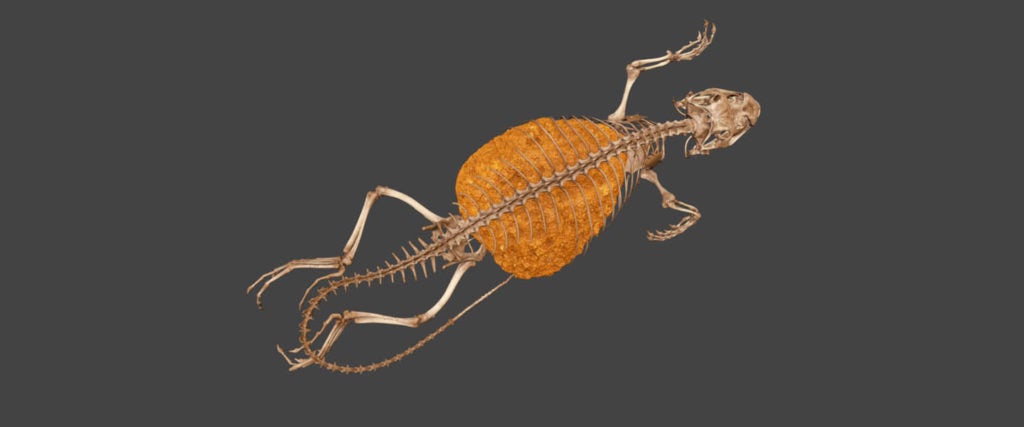While we were all sitting on our couches eating cheese and homemade bread in early quarantine, a trash-eating lizard in Florida was quietly becoming the most constipated animal of all time. When Natalie Claunch, a PhD candidate at the University of Florida’s School of Natural Resources and Environment, discovered the pear-shaped, northern curly-tailed female lizard, she assumed it was pregnant, but instead, the reptile was bringing the term “food baby” to the next level — clocking a body-mass ratio that was over 78 percent shit, six times more than the previous record holder.
For me at least, all of this raised an oddly competitive question: Could I ever get this constipated?
“There’s no way a human could achieve this level of constipation, and that’s definitely not a challenge,” Claunch tells me. “Humans would likely go into septic shock and die from constipation much less extreme than this.”
Reptiles in general are more vulnerable to constipation compared to mammals and birds because they have slower metabolisms and rely on external temperature to speed up their digestive process. This explains why the last reigning constipation king was a Burmese python, whose body-mass ratio was only 13 percent poop but contained multiple deer.
The “poop lizard,” as Claunch and her colleagues called it, was found in warm weather, so climate wasn’t the cause of its extreme constipation. Rather, lizards sometimes inadvertently eat non-digestible substances, most notably sand, when their food, like crickets, are stuck in it. Likewise, this particular breed of northern curly-tailed lizard isn’t naturally found in Florida. It’s native to the Bahamas, Cayman Islands and Cuba and was brought to the U.S. in the 1940s to help with pest control. This invasive move changed its diet to scavenging for whatever trash it could find — bits of fish, cheese, and in the case of the poop lizard, a gut-load of pizza grease. (Claunch suspects that the poop lizard was hunting for insects and smaller lizards, but was lured into the disposal area of a nearby restaurant.)
“I was blown away by how little room there was left for all the other organs. If you look at the 3D model, it has only a tiny space left over in its ribcage for the heart, lungs and liver,” Edward Stanley, the director of the Florida Museum of Natural History’s Digital Discovery and Dissemination Laboratory, which worked with Claunch to give the poop lizard a CT scan, said in a statement. “It must have been a very uncomfortable situation for the poor lizard.”
Sadly, upon further examination, it was clear that the poop lizard couldn’t digest the nutrient-depleted mass in its body; it was starving to death, and so, it was humanely euthanized. That said, the most constipated animal of all time didn’t die in vain; it lives on in a virtual, 3D CT scan at the Florida Museum of Natural History. “Zoom in to find the anole lizard skull that’s hidden [in the poop mass],” Claunch says.
Although her findings on the poop lizard were published in the journal Herpetological Review, Claunch characterizes the creature as a pretty random discovery, as it wouldn’t have occurred if she wasn’t collecting a large sample of northern curly-tailed lizards for another study on the species. Plus, most wild lizards who even come close to reaching the poop lizard’s level of constipation, die or are eaten by predators before they’re ever found. “You always find the most interesting stuff when you least expect it,” Claunch says, which is probably what the poop lizard thought when she found the bin of pizza grease.
Rest easy, constipation queen.

